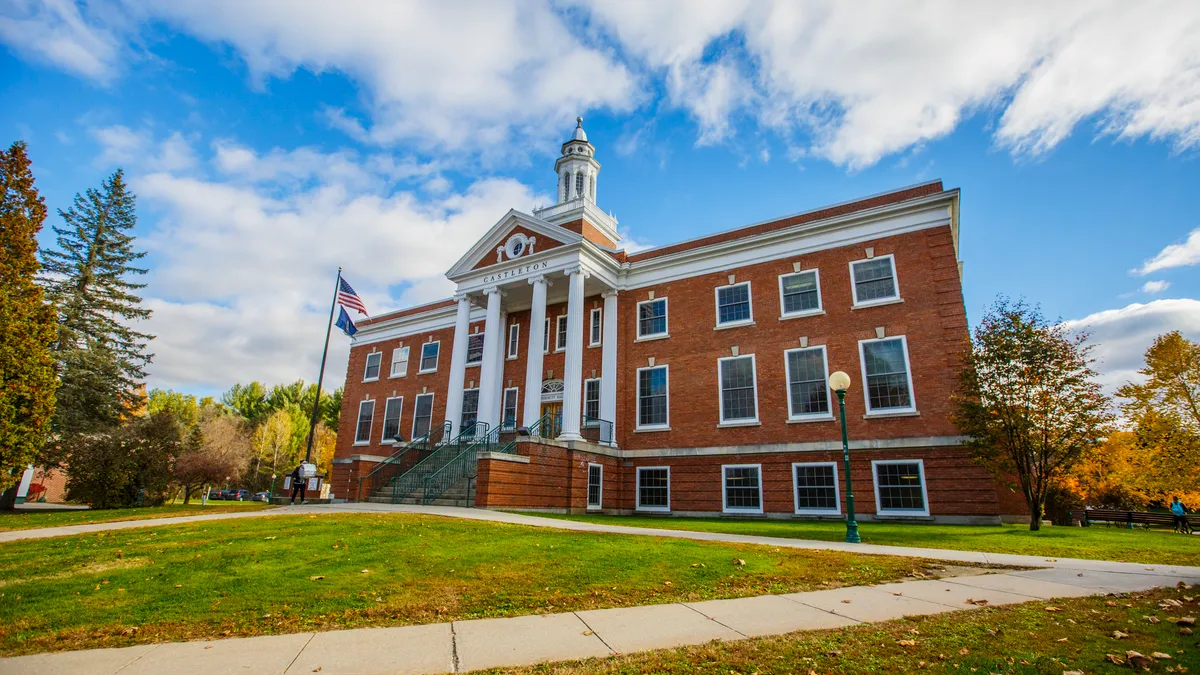The nascent Vermont State University — formed from a union of three public colleges looking to right their finances — remains in tough straits and is now looking to discard 10 of its academic programs and up to 33 full-time faculty members to get on course.
The merged institution — an amalgamation of Castleton University, Northern Vermont University and Vermont Technical College — was greenlit a couple of years ago to set those colleges on track to financial recovery.
But even before Vermont State’s formal launch in July, it was plagued with leadership turnover and controversy over a plan to shift its library to a digital format. University officials backed away from that proposal amid significant student, faculty and alumni backlash.
It appears Vermont State’s troubles aren’t over. Interim President Michael Smith wrote in a recent report to faculty that he is recommending not just the elimination of 10 programs beginning in fall 2024, but also consolidation of 13 others. He also wrote that the university should move 11 of its 99 majors to another one of Vermont State’s five campuses.
Under the plan, the university would also move forward with a faculty buyout program, which, if popular enough, would help avoid layoffs, Smith wrote. Vermont State wants to shed between 20 and 33 faculty positions out of its current 207 across all campuses. Faculty cuts could help yield savings of roughly $2 million to $3.4 million, Smith wrote.
“What we are doing with these recommendations is confronting our pressures head on — not running from them — and forging a path to address each and every one of them either through steps to obtain fiscal sustainability, strategic plan for admissions, or a student success model to keep students engaged in academic life,” Smith wrote.
What’s in a consolidation?
The three colleges that comprise Vermont State historically had shaky finances, problems that the Vermont State Colleges System said were exacerbated by the COVID-19 pandemic.
System leaders were optimistic the merger would correct these problems — and there was reason for hope. Vermont State said last month it had hit its enrollment target of 1,400 new undergraduates for the fall 2023 semester. It enrolled more than 5,200 students total.
But Vermont State still ended the previous fiscal year with a $22 million deficit, Smith wrote in the report.
“All campuses contributed to the deficit,” Smith wrote. “All struggled with enrollment and retention. No one campus is immune from the fiscal pressures we face.”
The 10 programs Smith has recommended for elimination include music, school psychology and agriculture.
Collectively, the 10 majors enroll 77 students, less than 2% of Vermont State’s student body, Smith wrote. He said the cuts wouldn’t affect current students, as officials would phase in the changes over two years.
Other majors would be combined, such as data science joining with mathematics and statistics.
Smith also pledged to examine administrative costs, a response to faculty criticisms that the university employs too many administrators. He wrote that he would issue recommendations on administrator positions before his tenure as interim president ends Nov. 1.
“Please know that I strongly agree that administrative costs of the university must be optimized and reduced as well,” Smith wrote.
Vermont State’s administration will take feedback on the plan until Oct. 27, the report states. It will make final decisions by Halloween.
Vermont State is hardly alone in using consolidation to stave off a financial crisis. In recent months, other public colleges have grabbed headlines for their cutbacks, including Dickinson State University in North Dakota, and West Virginia University, the state’s public flagship institution.
WVU pursued, among other cuts, elimination of all of its world language majors.
At both of the universities, the austerity moves sapped emotional and political capital from their respective presidents, calling into question whether they can continue to lead effectively.
Smith likely won’t come under the same degree of criticism, as he’s on his way out. Another interim chief executive will take over Nov. 1.
David Bergh, who most recently was president at the now-shuttered Cazenovia College in New York, plans to lead Vermont State for about a year and a half.














